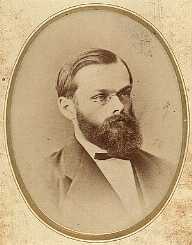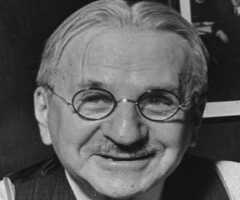Also Known For : Botanist, Geographer
Birth Place : Rostock, Mecklenburg-Vorpommern, Germany
Died On : October 10, 1896
Zodiac Sign : Cancer
Ferdinand von Mueller Biography, Life, Interesting Facts
Ferdinand von Mueller was a German-Australian botanist, physician, and geographer. Born on June 30, 1825, Ferdinand von Mueller was the founder of the National Herbarium of Victoria named many plants in Australia. In 1853, Governor Charles La Trobe appointed him as government botanist for the then colony of Victoria. Ferdinand von Mueller later became the director of the Royal Botanist Gardens in Melbourne. Ferdinand von Mueller started his career as a chemist while he traveled to Australia in 1847 and took interest in exploring and geography.
Early Life
Ferdinand von Mueller was born on June 30, 1835, in the Grand Duchy of Mecklenburg-Schwerin. His parents died when he was very so his grandparents Frederick and Louisa brought him up. Ferdinand von Mueller started his education in Tonning, Schleswig. At age 15, Ferdinand von Mueller served as an apprentice to a chemist. He then sat for a pharmaceutical examination, which he passed and enrolled at Kiel University to study botany under Professor Ernst Ferdinand Nolte. Ferdinand von Mueller completed his degree of Doctor of Philosophy at Kiel University in 1847 with his thesis based on plants of the southern regions of Schleswig.
Ferdinand von Mueller’s sister, Bertha had some health issues and was therefore advised to seek for a warmer climate to improve her condition. An astute botanist of the time, Ludwig Preiss, suggested her being taken to Australia, so Ferdinand von Mueller and his two sisters, Bertha and Clara, left Bremen in 1847. While sailing to Australia, he is said to have brought some plants out of the water and had them analyzed. On December 18, 1847, the siblings arrived in Adelaide.
Career
While there, Ferdinand von Mueller worked at Moritz J. Heuzenroeder, in Rundle Street as a chemist. He was an avid explorer and in his first year, chose to walk alone to Mount Arden and Mount Brown.Ferdinand von Mueller later decided to start a farm and so acquired a 20 acres land in Bugle Ranges and built a cottage there, moving in with his sister Clara. Ferdinand von Mueller, however, had a change in mind returned to work as a chemist.
He moved to Melbourne, the capital of Victoria in 1851 to open a chemist shop in the gold diggings. He had all this while contributed some papers in the field of botanic to German periodicals and sent his maiden paper to the Linnean Society of London in 1852. The paper, titled "The Flora of South Australia," gained him recognition in the botanical circles.
Victorian Government Botanist
In 1853, Governor of Victoria, Charles La Trobe, appointed Ferdinand von Mueller as the government botanist. His new post afforded him the opportunity to explore the flora of Victoria, and it was during this time that he chanced on the Alpine vegetation, which was unknown at the time. Ferdinand von Mueller also explored the Buffalo Ranges, Goulburn River, Gippsland Port Albert and Wilsons Promontory. Ferdinand von Mueller then established the National Herbarium of Victoria, which is still operational until date. The Herbarium keeps Australian plant species and other from abroad, most of which were collected by Ferdinand von Mueller.
Ferdinand von Mueller joined the exploration of Augustus Gregory ordered by Duke of Newcastle to explore River Victoria and other sites. Ferdinand von Mueller became one of the first for to reach Termination Lake in 1856. During this exploration, he discovered almost 800 plant species new to Australian science. That same year, he published the work Definitions of Rare or Hitherto Undescribed Australian Plants. He was a member of the Victorian Institute for the Advancement of Science, later Philosophical Institute of Victoria from 1854 to 1872. He was appointed the director of the Royal Botanic Gardens, Melbourne from 1857 to 1873, where he introduced many plants and also came up with the qualities of the bubble gum, which he introduced into North and South Africa, Europe and California.
Publications
Ferdinand von Mueller published a lot of his works with his two volumes of Plants of Victoria being published from 1860 to 1865. From 1862 to 1881, Ferdinand von Mueller published 11 volumes of his Fragmenta phytographicaAustraliae and also illustrated on the Eucalyptus, Myoparacaea, Acacia, and Salsolaceae in his other books. His other works includes, Index perfect us ad Caroli Linnaei : species plantarum / collatore Ferdinando de Mueller, (1880), A descriptive atlas of the eucalypts of Australia and the adjoining islands (1879–1884), Iconography of Australian species of Acacia and cognate genera (1887), Select extra-tropical plants readily eligible for industrial culture or naturalisation (1891).
Ferdinand von Mueller also published Introduction to botanic teachings at the schools of Victoria (1877), The organic constituents of plants and vegetable substances and their chemical analysis (1878), Manuel de l'acclimateur (1887), Fragmenta phytographiæ Australiæ /contulit Ferdinandus Mueller (1858–1882). The rest are The plants indigenous to the colony of Victoria, Volume 1 (1860–1862), Key to the system of Victorian plants (1887/88) and The Vegetation of the Chatham Islands (1864).
Personal Life
Ferdinand von Mueller was never married. He died on October 10, 1896, and interred in the St Kilda Cemetery.
Honors
The Australian and New Zealand Association for the Advancement of Science initiated the Mueller Award in 1904 to honor "a scientist who is the author of important contributions to anthropological, botanical, geological or zoological science, preferably with special reference to Australia." He has been named after Mueller Ranges, Mount von Mueller, Lake Mueller and Mueller River among others.
More Physicians
More People From Mecklenburg-Vorpommern
More People From Germany
-
![Paul Thomas Mann]()
Paul Thomas Mann
-
![Robert Huber]()
Robert Huber
-
![Richard Dedekind]()
Richard Dedekind
-
![Werner Heisenberg]()
Werner Heisenberg
-
![Albert Kahn]()
Albert Kahn
-
![Martin Heinrich Klaproth]()
Martin Heinrich Klaproth





















